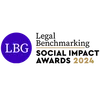Patentability of computer-implemented simulations: the established case law of Comvik stands out from the crowd (G1/19)

The Enlarged Board of Appeal of the EPO has recently published its decision G1/19 on computer-implemented simulations. The Enlarged Board of Appeal considered that computer invented simulations must be assessed according to the same criteria as any other computer-implemented invention, and that no requirement of a direct link with physical reality should apply.
Broadly the EPO approach to assessing computer-implemented inventions is that even if computer programs are excluded from patentability under Art. 52(2)(c) and (3) EPC if claimed as such, the exclusion does not apply to computer programs producing a “further technical effect” that goes beyond expected physical effects such as circulation of electrons in the computer (T1173/97). The use of a computer in the claimed subject-matter also makes it eligible for patent protection under Art. 52(2)(c) and (3) EPC. If the eligibility criteria is met, inventive step is assessed based on the Comvik approach (T641/00), i.e., by taking into consideration all the recited features that contribute to the technical character of the invention. This may include features that are non-technical when taken in isolation, such as mathematical formulae. Features making no technical contribution cannot support the presence of inventive step.
Traditionally, when drafting applications for computer-implemented simulations, patent attorneys were happy to rely on decision T1227/05. This case concerned a simulation of an electronic circuit subject to 1/f noise. It was considered that the simulation constituted an adequately defined technical purpose for a computer-implemented method, provided that the method was functionally limited to that purpose. A technical effect was acknowledged for the simulation even though the claimed invention did not incorporate the physical end product.
The referral and Decision in G1/19 originated from an application related to a computer implemented simulation of the movement of a pedestrian crowd through, for example, a modelled building – such a simulation may be useful when designing the building structure. The examining division considered that only the use of a computer contributed to the technical character of the recited method. Based on this, the solution was of course obvious. The Board of Appeal view was that a technical effect requires, at a minimum, a direct link with physical reality, such as a change in or a measurement of a physical entity. As this would diverge from T1227/05, the Board referred the following questions to the Enlarged Board of Appeal:
- In the assessment of inventive step, can the computer-implemented simulation of a technical system or process solve a technical problem by producing a technical effect which goes beyond the simulation’s implementation on a computer, if the computer-implemented simulation is claimed as such?
- If the answer to the first question is yes, what are the relevant criteria for assessing whether a computer-implemented simulation claimed as such solves a technical problem? In particular, is it a sufficient condition that the simulation is based, at least in part, on technical principles underlying the simulated system or process?
- What are the answers to the first and second questions if the computer-implemented simulation is claimed as part of a design process, in particular for verifying a design?
The Enlarged Board of Appeal considered that question 1 touched upon a point of fundamental importance, and admitted it, as well as question 3. But as it would never be possible to provide an exhaustive list of relevant criteria, question 2 was reformulated into: “(…) is it a sufficient condition that the simulation is based, at least in part, on technical principles underlying the simulated system or process?”
The decision issued by the Enlarged Board confirmed that the Comvik approach is suitable for the assessment of computer-implemented simulations. Simulations are not treated differently from any computer implemented invention and can comprise patentable subject matter.
Comvik (T641/00) is considered the established approach for assessing inventive step in dealing with so called mixed inventions. The Comvik decision published in 2003, almost two decades ago, sets out that only the claim features contributing to the technical character of the invention are considered for the assessment of inventive step. Non-technical features though may still contribute to the technical solution to the technical problem and so to therefore the technical character of the invention.
The Enlarged Board was reminded that a computer-implemented process involves input and output, which may be technical (typically, measurement data as input and control signals for controlling a machine as output), when there are direct links with physical reality. But a technical effect can also be achieved within the computer-implemented process, e.g. in the case of a better use of the storage capacity of a computer. The Enlarged Board pointed out that potential technical effects have been considered in the course of technicity/inventive step analysis, and it did not see a need to require a direct link with physical reality in every case.
Nevertheless, the Enlarged Board also deviated from T1227/05: “The often-quoted criterion of T 1227/05 that the simulation constitutes an adequately defined technical purpose for a numerical simulation method if it is functionally limited to that purpose should not be taken as a generally applicable criterion of the COMVIK approach for computer-implemented simulations, since the findings of T 1227/05 were based on specific circumstances which do not apply in general.” (emphasis added).
Numerical simulations may be patentable if an inventive step can be based on features contributing to the technical character of the recited method: “When the COMVIK approach is applied to simulations, the underlying models form boundaries, which may be technical or non-technical. In terms of the simulation itself, these boundaries are not technical. However, they may contribute to technicality if, for example,they are a reason for adapting the computer or its functioning, or if they form the basis for a further technical use of the outcomes of the simulation (e.g. a use having an impact on physical reality). In order to avoid patent protection being granted to non-patentable subject-matter, such further use has to be at least implicitly specified in the claim. The same applies to any adaptations of the computer or its functioning.” (emphasis added).
Thus, the answer to question 1 was affirmative. A simulation without an output having a direct link with physical reality may still solve a technical problem.
The answer to question 2 is negative. A simulation based on technical principles does not necessarily have a technical character. And a simulation based on non-technical principles may have a technical character. The system or process reflected by the simulation may be technical or may not be, it does not matter. Just as for other computer-implemented inventions, each should be examined on a case-by-case basis as to whether the patentability requirements are met.
Regarding question 3, the Enlarged Board indicated, unsurprisingly, that the answers to the first and second questions would not be different if the computer-implemented simulation were claimed as part of a design process.
In our view, it is encouraging to see the EPO approach of Comvik remaining in place and adapting to the pace of innovation in areas such as simulation and design. The stable approach is welcome.
It appears from the decision G1/19 that the Enlarged Board refuses to apply to computer-implemented simulation inventions specific criteria that would be different from those used to assess computer-implemented inventions in general. So other sub-categories of computer-implemented inventions such as AI are very likely to be also examined according to the Comvik approach.
There may be a message in G1/19 for applicants with subject matter including numerical solutions. In G1/19, since the simulation being based on technical principles underlying the simulated system is not enough to confer technical character, applicants should pay particular attention to the technical character of the recited subject-matter when drafting applications relating to numerical simulations. Do not hesitate to contact us if you wish to discuss the relevance of this case or require assistance with these matters.




















